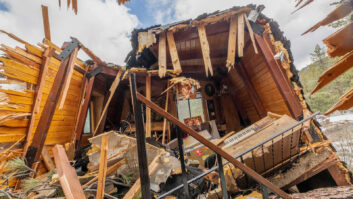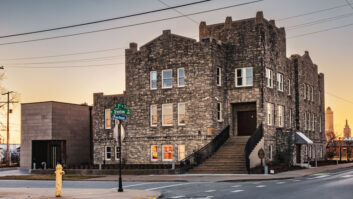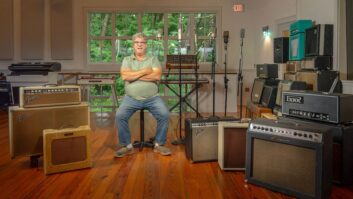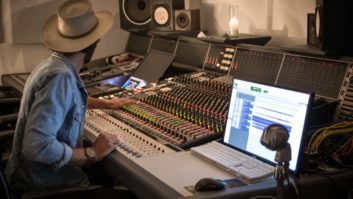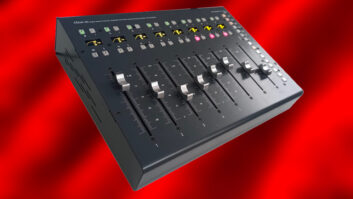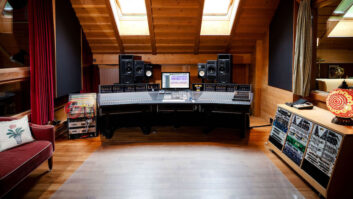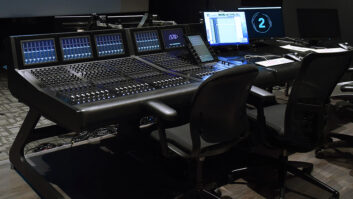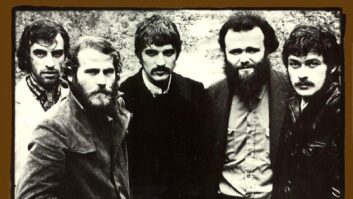Not many prospective studio owners can imagine a 145-year-old farmhouse transformed into a recording facility. But, in the Bible Belt town of Gastonia, N.C., where David Black has built Old House Recording Studio, such revelations are not uncommon.
Five years ago, Black, who had played in bands since he was a teenager, walked into the structure on the 400-acre farm, and it hit him. “I came up one day and was looking around here, and I saw it,” he says. “I had a vision of it.”
Twenty-five minutes outside of Charlotte, the year-old studio sits on the family homestead of Black’s wife, Janet. Her father farms the land, and the family harvested a great batch of Silver Queen corn this summer, Black says. Cucumbers, tomatoes and watermelons grow nearby. “We’re just Southern folks,” Black declares matter-of-factly.
His own home is next door to the studio, “So I can commute,” he chuckles, “by foot.” Black made that commute steadily for nearly three years during construction. At his day job, he built TV stations and P.A.s for an engineering firm, and during the evening and on the weekends he worked on the studio.
Although the exterior of the farmhouse was renovated by Black’s in-laws, the entire interior needed to be gutted, so Black enlisted partner Scott Applegate of nearby Clover, S.C. Applegate, who works as a computer engineer, recalls that the very nature of the building posed a problem: “Nothing was square or center as far as spacing. There were two huge fireplaces that needed to be taken down because the family wanted to save the brick. It took a good six to nine months to even get the building to a condition that we could actually work on.”
After getting the building down to a shell, Black and Applegate did most of the work themselves-except for some of the Sheetrock finishing and painting, the plumbing and the installation of a specially engineered climate control system. Black did the framing and put in floating oak floors.
He also double-insulated the walls, wired the studio and did most of the interior finish work. It seemed a long time coming. “After the second year of being up here working, I’d get frustrated with it, and so for my birthday, my wife did a little picture book-the beginning and where we’re at right now, and I could see the progress. It really motivated me.”
Black and Applegate eventually built three isolation booths, a large main room, a sizable control room and an adjoining lounge, all separated by glass walls and windows. Now, Black says, “Most people look at this and say, ‘Man, I can’t believe this!’-that we did all this work and pretty much went at it blindly, just taking all the information we had read in books and magazines and applying it. Believe it or not, the rooms turned out to be pretty good. I didn’t have to do a whole lot of treatment for acoustics.”
The studio’s equipment includes a Soundcraft Ghost 32-channel console with Drax Optifile fader and mute automation, which he only uses for mixdown. Instead Black relies on Neve 1272, API 312, 550b and 560 and Amek 9098 DMA preamps and records straight to 24 tracks of ADAT-XT 20 with a BRC. Monitors include Genelec 1030As and Yamaha NS-10Ms. Black has also acquired vintage AKG, EV and Neumann mics.
He also built a few pieces of equipment, including a clone of the Teletronix LA-2A and an Altec 556A preamp. “You can get these drawings and stuff off the Internet, and reading some reviews [in Mix], I was able to buy the transformers I needed from Bower Transformers in California,” he says. “I also talked a long time with Anthony DeMaria.”
Black has only been working in the studio full-time since last January. Word of mouth has led to demo work for local bands and recordings for gospel/contemporary Christian artists. Black has done most of his mastering at Charlotte’s Reflection Studio, where local heroes such as Hootie and the Blowfish have recorded. Gastonia native and singer/songwriter Sammy Johns, who scored a hit in the ’70s with “Chevy Van,” was in to record his latest CD. And Gastonia metal band Trybe (formerly War Mouth) won a contract with Platinum Records after another local, Fred Durst of Limp Bizkit, heard the demo they tracked at Old House.
Trybe blew back into the studio-in the wake of Hurricane Floyd-to record their complete album. As for the storm, Black says, “We battened down the hatches, and we got the horses in and put them away.”
